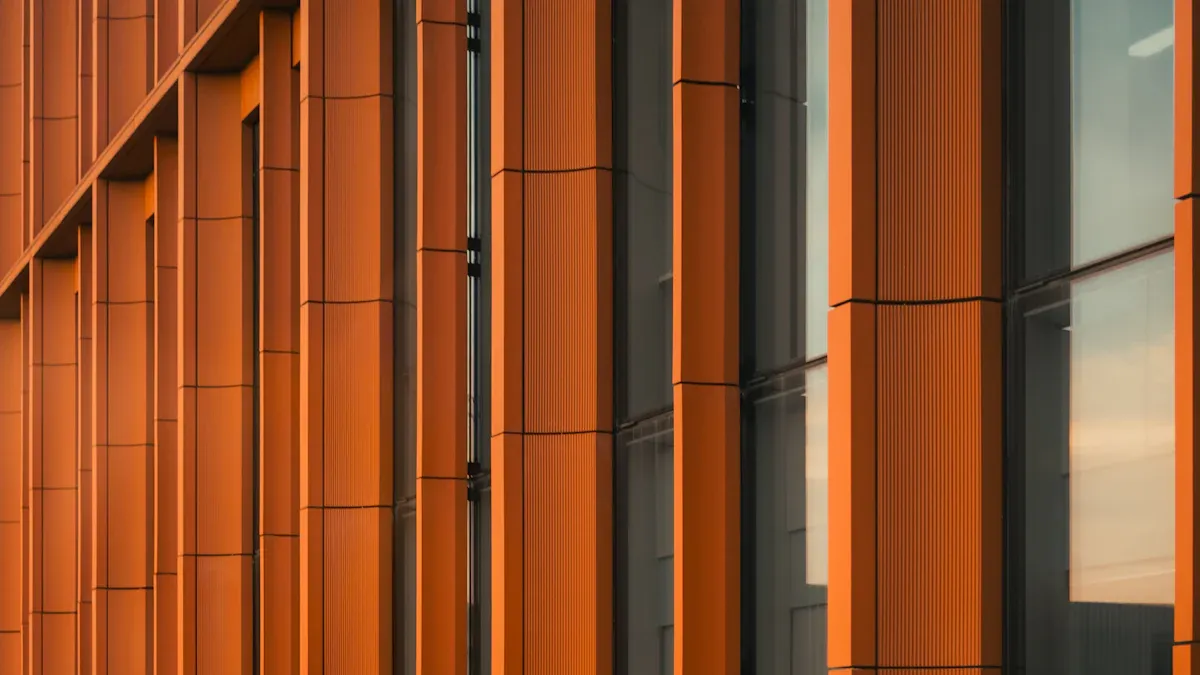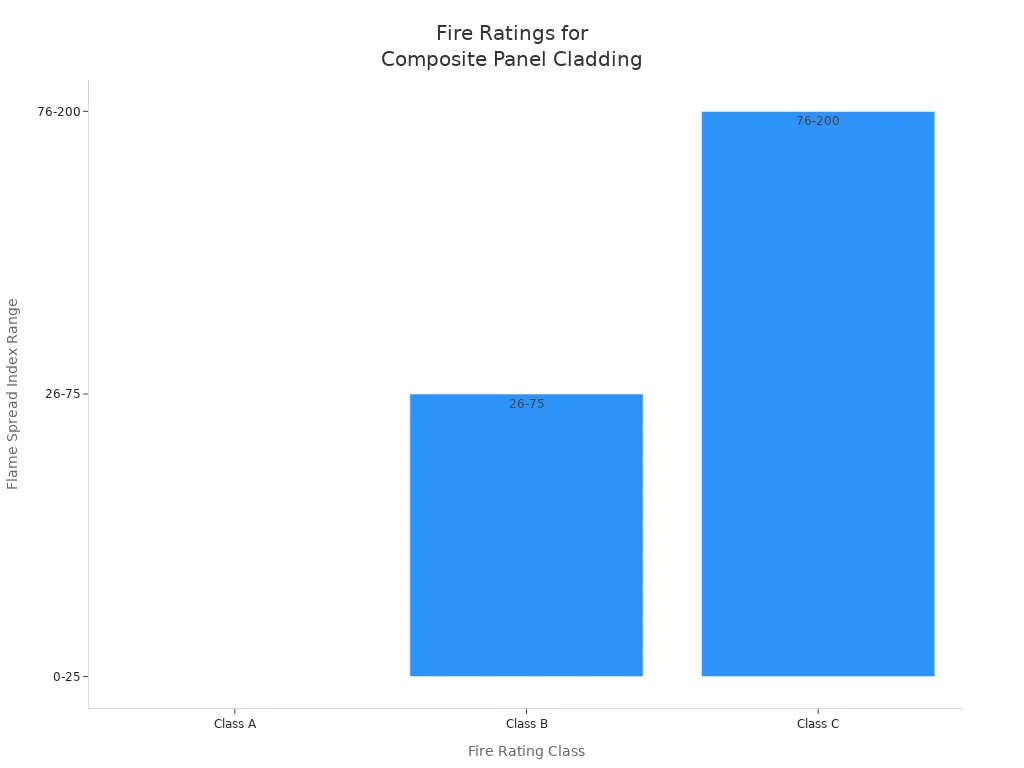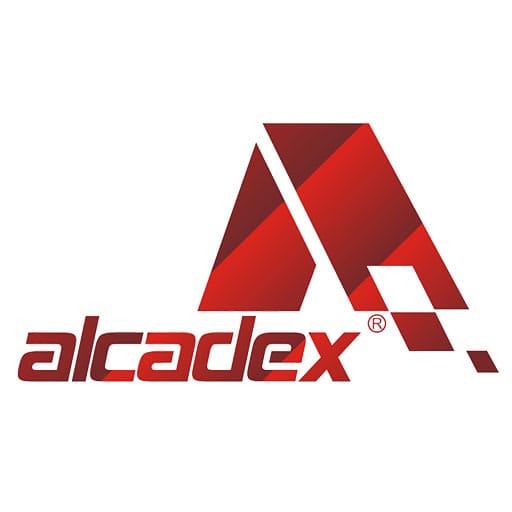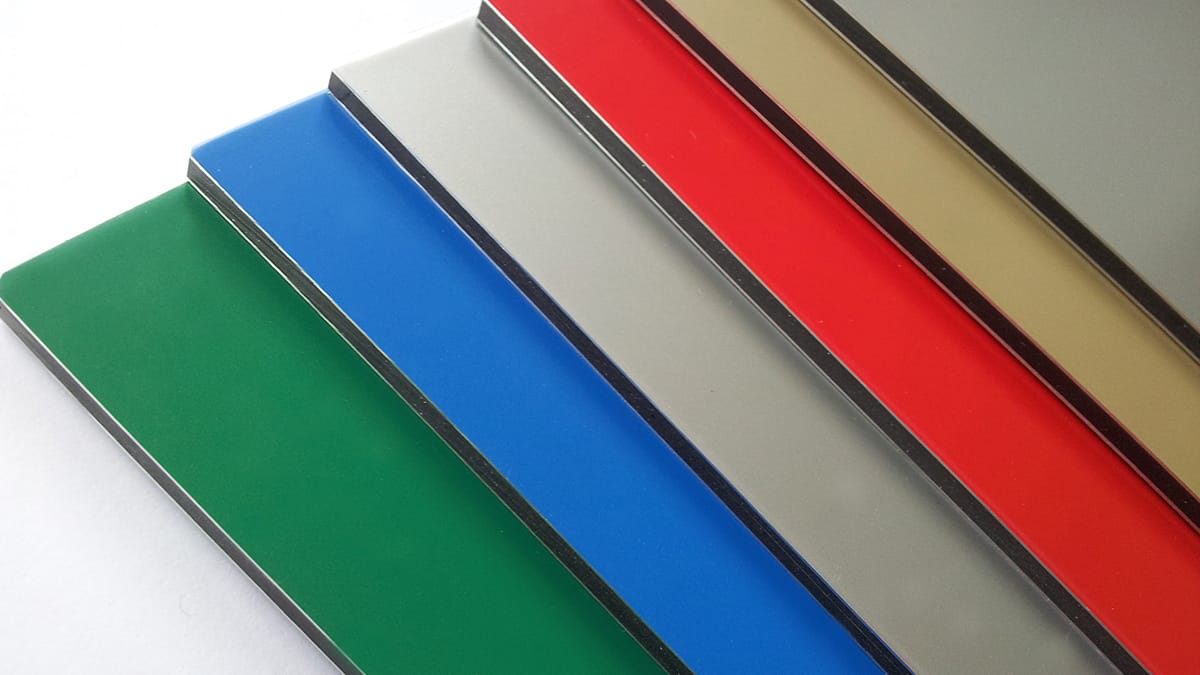
08 Sep What Is Composite Panel Cladding and How Does It Work
Table of Contents
Composite panel cladding goes on the outside of buildings. It helps protect buildings from bad weather. It also makes buildings look nicer. You can find composite panel cladding on most malls, hotels, and stores. More than half of new tall homes in cities use it too. People pick composite cladding because it does not let water in. It does not fade in the sun. It keeps its color for a long time. Composite panel systems are easy to design. They do not need much care. They also help save energy.
Key Takeaways
Composite panel cladding keeps buildings safe from weather. It also makes them look better. People use it in malls, hotels, and new homes.
The panels have layers. The core gives strength and insulation. Pick the right core for your project. Think about fire safety or if you want it light.
You need to plan before installing. Measure your walls first. Get the surface ready. Follow each step to avoid mistakes. Mistakes can cause damage.
Composite cladding panels are strong and easy to care for. They last longer than wood. They do not fade, rot, or get ruined by bad weather.
When you pick panels, think about what your building is for. Check the local weather and your budget. Ask experts for help. This will help you choose safe and good-looking panels.
Composite Panel Cladding Overview
What Is Composite Panel Cladding
Composite panel cladding covers the inside or outside of buildings. The panels have layers made from different materials. Each layer gives the panel special qualities. The core is in the middle of two thin sheets. The core can be polyethylene, fire-retardant compounds, mineral blends, or aluminum honeycomb. The sheets on the outside are usually aluminum or other metals.
Here is a table that lists the main core materials and what they do:
Properties | Applications | |
|---|---|---|
Polyethylene (PE) | Cheap, light, but burns easily. | Signs, inside decoration |
Fire Retardant (FR) | Does not burn as fast, good for fire rules. | Hospitals, tall buildings |
Mineral Core | Does not burn, great fire safety, keeps heat in. | Airports, outside walls, tunnels |
Aluminum Honeycomb | Light, strong, safe from fire, keeps heat in. | Boats, planes, transport |
Polystyrene (PS) | Light, keeps things warm or cold. | Sound walls, cold rooms, trucks |
You can pick the core material that fits your project. If you want better fire safety, choose mineral core or fire-retardant core. If you need something light and strong, use aluminum honeycomb.
Composite panel cladding makes buildings look modern and protects them well. There are many colors and finishes to pick from. Black composite panel cladding gives a bold and stylish look. Some panels look like wood or stone, but last longer and need less care.
Common Uses
You see composite panel cladding in lots of places. Builders use it because it looks nice and keeps buildings safe from weather. You can use it inside or outside. Here are some common ways people use it:
Outside walls to make buildings look new and nice.
Inside rooms to add style to homes, offices, and stores.
Furniture and fixtures, because the panels are light and strong.
Signs and boards, so businesses look neat and professional.
Decks, which are easy to clean and take care of.
Siding, to make cool patterns and bright colors.
Wall cladding, to turn plain walls into something special.
You often see composite panel cladding on hotels, warehouses, and cold storage buildings. These places need safe and clean materials. You also see it on the outside and roofs of many new buildings. This makes composite cladding a good choice for many projects.
Tip: You can use composite panel cladding to make cool designs. Try using different colors or textures to help your building stand out.
How Composite Cladding Panels Work
 Structure and Materials
Structure and Materials
When you look at composite cladding panels, you see a smart design that keeps buildings safe and looking good. Each panel has a layered structure. The core sits in the middle and acts like the web of an I-beam. This core can be made from foams, mineral blends, or honeycomb shapes. These materials keep the panel light but strong. On both sides of the core, you find thin skins. These skins are usually made from composite materials like e-glass and epoxy resin. The skins bond tightly to the core, making the whole panel stiff and tough.
This sandwich construction gives composite cladding panels their strength. The panels can handle wind, rain, and sun without bending or breaking. You get the look of wood or stone, but you do not have to worry about rot or fading. The materials in composite cladding panels also help save energy. Some panels have UV stabilizers and insulation inside. These features keep your building cool in summer and warm in winter.
Composite cladding panels can look like wood, stone, or metal.
The mix of wood fibers and thermoplastics makes the panels strong and attractive.
UV stabilizers protect the color from fading.
The panels resist rot, decay, and harsh weather.
You can trust composite cladding panels to last longer than wood. They keep their shape and color for many years. You do not need to paint or seal them often. This makes them a smart choice for busy buildings.
Installation Basics
Installing composite cladding panels takes careful planning. You need to measure your wall space first. This helps you know how many panels you need. Gather all your tools and materials before you start. Make sure the wall is dry and strong. If you skip this step, you might face problems later.
Here are the main steps for installing composite cladding panels:
Measure your wall and plan the layout.
Gather the right tools and panels.
Prepare the wall surface. Clean it and check for damage.
Install starter clips at the bottom. These clips keep the first row straight.
Attach the composite cladding panels one by one. Make sure each panel lines up with the last.
Add trims and corner pieces. These parts protect the edges and make the wall look neat.
Leave small gaps for air and expansion. This stops moisture from building up.
Check your work and clean up the area.
Tip: Take your time with each step. Rushing can lead to mistakes that cost money and time.
If you do not prepare the wall or leave enough space for the panels to expand, you might see buckling or cracks. Here is a table that shows common mistakes and what can happen:
Common Installation Mistakes | Consequences |
|---|---|
Visible buckling near corners | Aesthetic issues and potential structural failure |
Cracked finishes during freeze-thaw cycles | Damage to the panel surface and reduced lifespan |
Voided warranties due to improper installation | Financial loss and lack of support from manufacturers |
Many system failures happen when people skip cleaning the wall or do not leave enough space for the panels to move. One installer said,
“Skipping these steps led to $8k in repairs when panels warped within six months.”
When you follow the right steps, composite cladding panels protect your building and keep it looking great for years.
Composite Panel Benefits and Drawbacks
 Durability and Maintenance
Durability and Maintenance
You want your building to last a long time. Composite cladding panels help with this goal. These panels can handle strong sun and heavy rain. They do not break down easily. If you compare them to wood, you see they last longer. Wood needs more care and does not last as long. Look at this table to see the difference:
Material Type | Durability (Years) | Maintenance Needs |
|---|---|---|
Composite Cladding Panels | Low maintenance | |
Wood Cladding | 15 (low-cost) to 20 (hardwood) | High maintenance (susceptible to rot and pests) |
You only need gentle soap and water to clean composite panels. This stops stains and sun damage. You do not need to paint or seal them. If you live where weather is rough, clean the panels more often. Keep extra panels for repairs. This helps you match the color if you fix a spot.
Aesthetics and Flexibility
Composite cladding panels let you design in many ways. You can pick from lots of colors and textures. Black composite panel cladding is popular for a bold look. Architects like these panels because they fit many styles. You can use them for simple designs or cool patterns.
Material Type | Aesthetic Options | Notes |
|---|---|---|
ACM Panels | Highly rated for modern and sleek appearances | |
Other Materials | Limited options | Less flexible in design versatility |
ACM panels work well for modern buildings.
Composite cladding panels need less care than wood.
The panels keep their color and look new for years.
People like simple designs and dark colors now. You can use composite cladding panels to add nature to your space. Try mixing curves and straight lines. Add natural textures for a fresh look.
Limitations
Composite cladding panels are strong but have some limits. Some experts say they do not work well for big roofs. The way panels connect to steel supports can cause problems. If fasteners are weak, panels may get damaged. You cannot always see these problems because connections are hidden.
Composite sandwich panels are not good for large roofs. The connection to thin steel purlins is weak. Damage can happen inside even with light loads.
Composite cladding panels cost more at first than wood or vinyl. Over time, you save money because you do not repair them often. Here is a table that shows costs and savings:
Aspect | Composite Panel Cladding | Traditional Options |
|---|---|---|
Initial Cost | Lower | |
Long-term Savings | Significant | Minimal |
Maintenance Requirements | Low | High |
Durability | High | Variable |
Weather Resistance | Excellent | Poor to Moderate |
If you want to use composite cladding panels, ask a professional. Make sure they fit your project needs.
Composite Cladding Safety
Fire Performance
It is important to know how composite cladding panels act in a fire. In the United States, building codes like the International Building Code have strict fire rules. Chapter 14 of the IBC says outside wall systems must slow down fire. You can check a panel’s fire safety by its flame spread index. Here is a table that shows the main classes:
Class | Flame Spread Index | Description |
|---|---|---|
Class A | 0-25 | Minimal flame spread, highest level of fire resistance. |
Class B | 26-75 | Moderate flame spread, suitable for certain applications. |
Class C | 76-200 | Higher flame spread, may require additional fire protection. |

Class A composite cladding panels give the best fire safety. These panels stop flames from moving quickly. Many new panels use special cores or coatings to resist fire. For example, solid aluminum panels with coatings can block heat and flames. This helps keep exits safe and gives firefighters more time. Always check if your panels meet local fire codes before you put them up.
Note: Fire-resistant composite cladding panels help protect your building and lower risks for people inside.
Other Safety Factors
Composite cladding panels also protect buildings from bad weather. They keep out rain, snow, and strong sun. These panels do not swell or crack when it gets hot or cold. Composite cladding panels can last 25 to 30 years, even in harsh weather. You do not need to worry about fading or water damage.
Composite cladding panels block UV rays and moisture.
They keep their shape in both cold and hot weather.
Vinyl siding may swell or bend, but composite cladding panels stay strong.
You should also think about how you put up composite cladding panels. If you use weak fasteners or skip checks, panels can fall or break. Some buildings had problems because workers did not anchor panels well. You can stop these risks by following the right steps and checking your panels often.
Tip: Always hire a trusted installer and check your composite cladding panels often to keep them safe and secure.
Choosing Composite Panel Cladding
Selection Tips
When you pick composite cladding panels, think about more than color. First, decide if your building is a home or a business. Homes need comfort and good insulation. They also need to look nice. Businesses need panels that resist fire. They want strong panels that last long. Branding is important for businesses too.
Think about the weather where you live. Some panels work better in hot places. Others are best for cold or wet areas. Your budget matters. Try to balance the first price with future savings. Some panels cost more at first. They can save money on repairs and energy later.
Here are some things to compare:
What you will use the building for
The climate and weather in your area
How much you want to spend now and later
Use this table to check the quality of composite cladding panels:
Criteria | Description |
|---|---|
Checks for color changes and surface flaws over time. | |
Panel Deflection | Makes sure panels stay strong in wind and return to shape. |
Panel Bow | Looks at how panels handle temperature changes and movement. |
Surface Imperfections | Sets rules for small marks or dents, based on industry standards. |
Finish Performance | Tests for impact, wear, and corrosion using trusted standards like ASTM and AAMA. |
Key Considerations
Maintenance is important when picking composite cladding panels. Strong panels need less cleaning and fixing. Paying more at first can mean less money spent later. Good materials keep your building looking new. They help it work well for years.
Criteria | Explanation |
|---|---|
Strong panels need less fixing and cleaning. | |
Life Cycle Costs | Higher first cost can mean lower costs over time. |
Performance | The right material keeps panels working well and looking good. |
Always talk to a building expert before you choose. Experts know local rules and fire codes. They help you pick panels that fit your style and budget. They check if panels work for your weather and safety needs. For a modern look, try mid grey or natural grey composite panel cladding. If you want a warm style, light brown slatted composite cladding is a good choice. These options help you get the most from your building materials.
Description | |
|---|---|
Local building codes and fire requirements | Keeps your project safe and legal. |
Environmental conditions and exposure | Makes sure panels last in your climate. |
Architectural design requirements | Matches your vision and style. |
Budget constraints and lifecycle costs | Helps you plan for now and the future. |
Maintenance capabilities and requirements | Makes upkeep easy and affordable. |
Sustainability goals and certifications | Supports green building practices. |
Tip: Always ask a professional before you buy composite cladding panels. This helps you avoid mistakes and keeps your building safe.
You now know that composite cladding panels keep buildings safe and help save energy. They also give you lots of ways to design your building. When picking composite cladding panels, think about what your project needs. Make sure you look at how strong and safe the panels are. Many real-life examples show these panels make buildings look better and cost less. Some people think composite cladding panels are too expensive. But they actually help you save money over time. If you need more help, check out guides from the Composite Panel Association or NORTEM. Always talk to experts before making your choice.
Organization | Description |
|---|---|
Composite Panel Association | Gives helpful information for architects, designers, and buyers. |
NORTEM | Shares how-to guides and answers common questions. |
FAQ
What makes composite panel cladding different from regular siding?
Composite panel cladding has layers for extra strength. It protects buildings from bad weather. You can pick from more colors than regular siding. The panels last longer and do not fade. They also do not rot like wood siding.
Can you install composite cladding panels by yourself?
You can put up panels if you follow the steps. Use the right tools for the job. Many people ask experts to help them. Good installation makes panels last longer. It also helps them look neat and straight.
How do you clean composite panel cladding?
Clean panels with mild soap and water. Use a soft brush or cloth to wipe them. Do not use strong chemicals. Clean them often to keep them looking new. This stops stains from building up.
Is composite panel cladding safe for homes?
Panels can be very safe if you pick the right core. They meet safety rules for homes and stores. Always check ratings before you buy panels. Make sure they follow local codes.
What colors and styles can you choose for composite cladding?
You can choose from many colors and finishes. Some panels look like wood or stone. Designers use black, gray, and brown for modern looks. You can mix colors to make cool patterns.



 Structure and Materials
Structure and Materials Durability and Maintenance
Durability and Maintenance